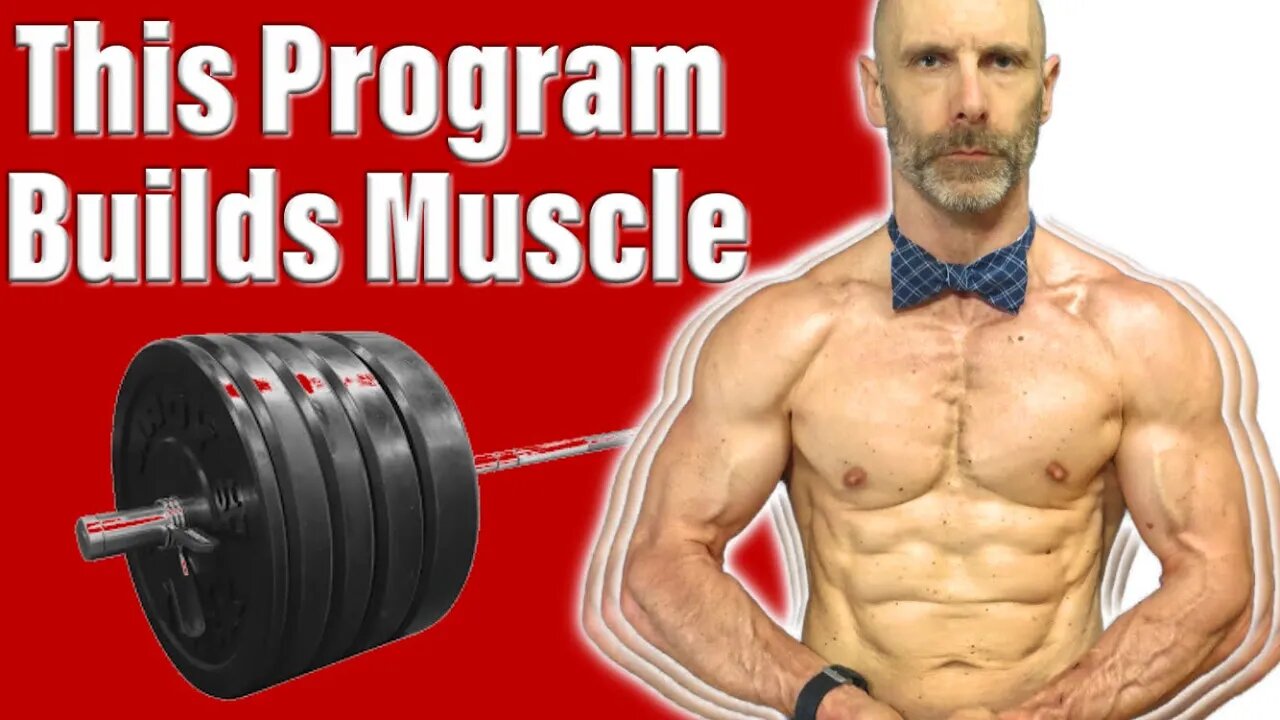Premium Only Content

Hypertrophy Specific Training (Full Program Included)
Hypertrophy specific training program
A couple of years ago, when I was doing videos on some of my training philosophies in the comments, people would mention HST or Hypertrophy Specific Training, a program developed by Brain HayCock, a bodybuilding writer and a lifelong lifter.
With a master's in Exercise physiology, a bachelor's in clinical physiology, exercise and sport science. With a minor in nutrition.
So this guy has experience and education in spades. And today, we are going to break down his program to see if it’s something you might want to try or if there are things about his program you might want to incorporate into your training.
HST uses full-body workouts done 3 times a week, in an 8-week program, followed by a 2-week deload before repeating. It has 4 two week training blocks. In the first two weeks, the sets are 15 reps. For the next block, it drops to 10 repetitions, with the reps continuing to drop down two to 5. As the reps go down, the weight your using goes up, providing a fresh training stimulus.
The last block before the deload focuses on negatives or drop sets.
After I establish the framework of HST, I’ll post a sample program.
For each training block, we need to know what weight brings us to failure at 15, 10, and 5 reps
The easiest way to do this is to pick a weight you think you can only do 10 repetitions, then use this as your test weight, doing as many reps as possible until failure. It doesn’t matter if you reach failure exactly at 10 reps because we will take the number you did and use a chart to estimate your max’s.
Say you hit 8 reps, times this weight by the number on the far right of this chart to give you your estimated one-rep max. Then times it by the percentage beside the 5, 10 and 15 repetition number, and that will provide your max weight for each training block.
You’ll do this for every exercise in the program. You can tell it was designed by a university guy with all this math.
A lot of strength programs work off of a percentage of one-rep max. So programming your training this way isn’t unusual for an experienced lifter.
For exercise selection, there can be an A and B workout, but In the sample workout, Brian provides there is only 1 exercise that changes from the A to B, and that’s squats alternating with leg press. That doesn’t mean you can’t alternate other exercises like bench press with dips.
For the number of exercises in a workout, you can choose anywhere from 4 to 7, prioritizing compound movements with at least one exercise for legs, chest, back and shoulders.
Every workout will use a different weight but the same number of repetitions, slowly building up to your maximum over 6 workouts.
For your upper body, each training block starts with a weight that is 30 pounds lighter than your final week's max. Add 5 pounds each workout until you reach your maximum on the last workout for the training block.
For the lower body, start with a weight that is 60 pounds lighter and add 10 pounds every training session.
The first couple of workouts might feel relatively light, which is okay as it gives your joints, tendons and central nervous system a break.
To make these first few workouts more challenging, reduce the tempo of the exercises to a point where you feel like you’re going to fail by the last rep. This could be as slow as a 6 second rep with a 3 second concentric and eccentric movement.
I’ll put up the recommendation for warm-ups up on the screen and you can screenshot them.
The final two weeks are negatives repetitions. The program has you increasing the weight to your 2 rep max and doing 5 slow negatives. This would require a couple of training partners, and some exercises like squats aren’t appropriate to do this way.
So they provide another option with drop-sets. This whole program only has two working sets for each exercise, and this final phase is no different.
When using the drop set method, continue to with your 5 rep max. On your second set, as soon as you finish your fifth repetition, reduce the weight without resting by about 20 or 25 percent, then rep out to technical failure and drop the weight one more time by the same percentage.
After this, you should be ready for a deload where the program has you taking a full two weeks off training. This will put you in a slightly decondition state, giving the body a little extra shock when you start training again.
With HST, they use load or the weight lifted as the primary stimulus for muscle growth, and this is a good thing, but they keep the training volume low, and Volume is also a key driver of muscle growth to find out how you can better use volume to build new muscle watch this video next and keep working out while having fun
-
 4:57
4:57
Fit and 50
2 years ago $0.08 earnedBuild Full Body Muscle at Home With Dumbbells Over 50 (Real Growth)
4592 -
 20:05
20:05
Preston Stewart
12 hours ago $0.54 earnedCrimea Raid to Chasiv Yar Fight
3.4K6 -
 8:11
8:11
Millionaire Mentor
14 hours agoTulsi Gabbard and Leavitt DOUBLE-TEAM Kaitlan Collins in FIERY Exchange
3.38K5 -
 46:02
46:02
Coin Stories with Natalie Brunell
1 day agoWhat They’re Hiding About the Economy | Natalie Brunell with Danielle DiMartino Booth
35.6K6 -
 12:12
12:12
GritsGG
13 hours ago23 Warzone Wins in a Row! (Cypher AR)
77.7K1 -
 2:12:07
2:12:07
Side Scrollers Podcast
20 hours agoCULTURE SHIFT CAUSES MELTDOWNS + MASSIVE CENSORSHIP EFFORTS RAMP UP | SIDE SCROLLERS LIVE
19.9K8 -
 11:25
11:25
Nikko Ortiz
1 day agoMost Painful Fails
53.2K29 -
 43:55
43:55
pewculture
6 days ago $4.73 earnedIf the Purge was real, this is what we'd do... - EP#24
16.8K6 -
 8:14
8:14
MattMorseTV
1 day ago $11.12 earnedTrump just DROPPED the HAMMER.
61.7K72 -
 LIVE
LIVE
Lofi Girl
2 years agoSynthwave Radio 🌌 - beats to chill/game to
372 watching